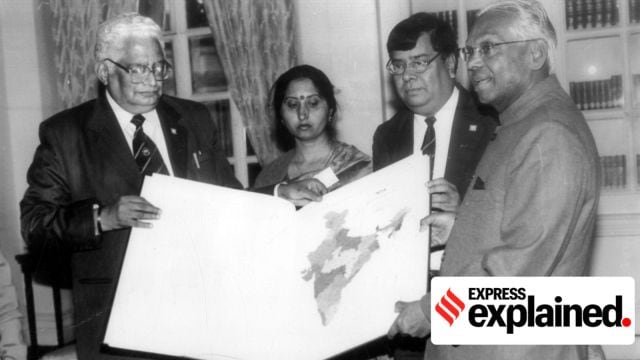Census data are self-reported, and enumerators record the information that is provided to them by respondents.

The first Census of 1872, which was conducted non-synchronously across India, put a set of 17 questions to respondents; the questionnaire of the last Census of 2011 had 29 questions and collected more data points. These 29 questions were almost the same as those asked in the previous (2001) Census as well.
Major changes in the list of questions to collect specific details were made in 1941 and 1951, the Census exercises that immediately preceded and followed Independence.
Here’s how the patterns of questions put to respondents have changed over the years.
1872: One hundred and fifty three years ago, data were collected based on details for House register: number of houses, whether terraced, tiled, or thatched; name of males and females, age, religion, caste or class, “race or nationality or country of birth”; occupation of males; youths up to age 20 years attending schools, college, or under private tuition; the ability to read and write; and the number of males and females who were blind, deaf, dumb, insane or lepers.
1881: More questions were added to this set in 1881 to collect four additional pieces of information — marital status, mother tongue, occupation of females, and sect of religions (other than Hindu).
Story continues below this ad
1891: In 1891, information was collected on 14 questions, including caste and race, and the knowledge of any foreign language.
1901: The next Census was conducted with 16 questions. Apart from Hindus, the caste of Jains, and the tribe or race of others was asked, as well as the subsistence of dependents on actual workers. It was also specifically asked whether the person enumerated knew English.
1911, 1921: The questionnaire for this Census had a column in which Christians were asked their sect. The next Census held in 1921, had a similar set of questions.
1931: Among the new questions asked in 1931 were the industry in which employees in the organised sector worked, and what languages apart from their mother tongue they used.
Story continues below this ad
1941: The last Census before Independence had a 22-question questionnaire, and sought specific information such as the number of children born to a married woman and the number surviving, her age at the birth of first child, etc.
It also asked if the respondent employed paid assistants and members of the household, and whether the enumerated person was employed or in the search of employment, and since when. Details of examinations passed were sought.
1951: The first Census after Partition and Independence asked questions on nationality and displaced persons. Caste, asked in 1931 and 1941 (even though the caste data collected in 1941 was not published), was not in the list of questions in 1951.
Questions on health and family included those on fertility, duration of marriage and size of the family (such as completed years of married life and age of mother at first maternity), number of children born, and number of children who were alive at the time. It also had questions on infirmities and the relationship of the individual with the head of family.
Story continues below this ad
On employment, the questionnaire asked whether the respondent was unemployed since February 9, 1951 and, if so, the reason. There were questions on the area of land owned or cultivated by the household.
The Census asked about indigenous persons in Assam. It was on the basis of this data, which was copied out in registers, that a National Register of Citizens (NRC) was later published in Assam.
In respect of each village showing the houses or holdings in serial order, it was indicated, against each house/ holding the number and names of persons living therein; and in respect of each individual, the father’s name/ mother’s name or husband’s name, nationality, sex, age, marital status, educational qualification, means of livelihood or occupation and visible identification mark.
1961, 1971: The column of Scheduled Caste/ Scheduled Tribe (SC/ST) was incorporated for the first time in the 1961 Census. However, the castes of individual respondents were not specifically asked.
Story continues below this ad
Apart from the nature of work, like working as a cultivator, agriculture labourer, and industry, the trade and name of the establishment were asked. This was sought even if the person was not working.
The 1971 Census compiled similar information.
1981: A major change was the asking of the name of the caste/ tribe among SCs and STs, and the reason for migration. Also, the gender of children was asked for the first time.
1991: Similar information was collected in the 1991 Census with an additional detail about ex-serviceman (pensioner/ non-pensioner).
2001: In the 2001 census, economic activity of main or marginal workers, type of worker (employer/ employee/ single worker/ family worker), and non-economic activities were asked. If the person had to travel to their place of work, the distance from their residence to place of work (in kilometres) and the mode of travel were asked.








































